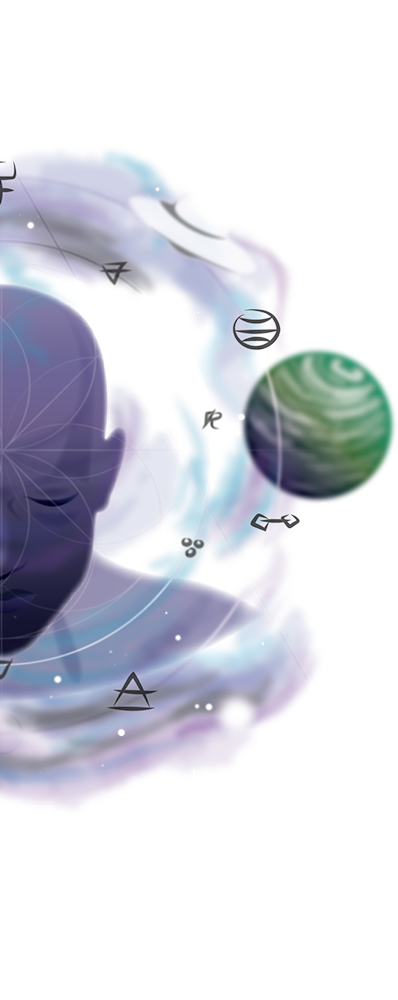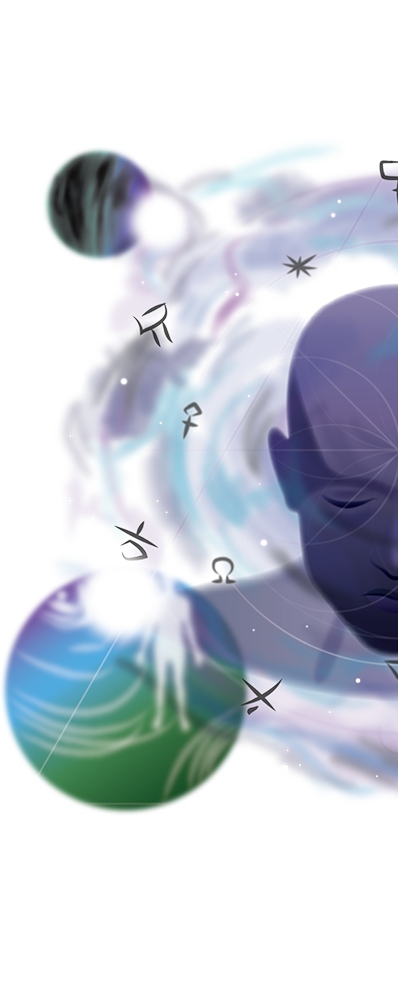By Rosemary Ellen Guiley
Copyright Visionary Living, Inc.
Have you ever lost or misplaced something which mysteriously reappeared later — and in an odd place? And you couldn’t explain how it got there? If so, you have plenty of company. You may not be suffering from absentmindedness or a faulty memory — you’ve been jottled!
“Jottled” is a fairly new word in the lexicon of the strange and unexplained. It comes from the term “jott,” which stands for “just one of those things.” Jotts describe odd paranormal phenomena which do not fit into any prevailing paradigm. The acronym was coined by Mary Rose Barrington, a psychical researcher and vice president of the Society for Psychical Research in London. Barrington has collected, classified and catalogued numerous cases of jotts. Perhaps you’ve experienced one or more of them!
There are two main classes of jotts. The more frequent of the two is “jottles,” which concern displacements of objects, including phenomena associated with teleportation, apports and poltergeist activity. The second is “oddjotts,” which concern miscellaneous happenings that have no explanation.
There are different kinds of jottles:
Walkabout. An article disappears from a known location and is found later in another and often bizarre location, without explanation for how it got there.
Comeback. An article disappears from a known location and later — sometimes minutes or perhaps even years — mysteriously reappears in the same location. It may be a special case of walkabout.
Flyaway. An article disappears from a known location and never reappears. Flyaways may be stage 1 walkabouts with an exceptionally long time-frame.
Turn-up. An article known to an observer but from an unknown location is found in a place where it was previously known to be. Turn-ups may be stage 2 of a walkabout.
Windfall. A turn-up in which an article is not known to the observer.
Trade-in. A flyaway followed by a windfall that is closely similar to the article flown away.
Things that go walkabout
The most common jottles are walkabouts, which usually happen to small objects. Once I experienced a strange walkabout involving a ring, not once, but twice.
Once on a trip to England and Scotland, I spent a week at Findhorn, where I purchased a small memento of a silver Celtic knot ring for my right pinky finger. It was snug but not tight in fit. It did not slip off easily. I returned to London, where I was staying with friends, and then several days later went to Paris to meet the man who later became my husband, Tom (we are divorced now). At the time, we’d known each other for about six months and I “knew” we were going to get married, though the subject had not been broached verbally.
I was wearing the ring when I left to catch the train for Heathrow, and admired it while I was standing on the platform waiting for the train. Shortly after getting on the train, I discovered to my consternation that it was gone. It was not on the train, so I surmised that it had fallen off on the platform while I was juggling my luggage on.
When I returned to London several days later, I found the ring sitting on the bureau in my room. I told the story of its apparent loss to my friend, who said she’d found it in the middle of the room on the floor shortly after I left.
A few months later, back in the States, Tom and I went to the Maryland state fair one evening. I was wearing the ring. Once again, I suddenly noticed it was missing. I insisted on retracing my steps, including all the sawdust-filled aisles where the sheep were on display. Of course I didn’t find it. I concluded that it was gone once and for all.
When I got home, it fell out from inside the bottom of a leg of my jeans. I ruled out that it had simply fallen into my waistband unnoticed, because while at the fair — after the ring was discovered missing — I’d searched through my clothing for it. I had also walked around for several hours after the ring vanished.
After that, there were no more mishaps with the ring. The mysterious disappearances were a puzzle for which I had no good explanation. Mary Rose Barrington’s articles on jotts intrigued me, and I started collecting other people’s stories of their experiences with jotts.
For example, Rod T. reports the following walkabout:
“Years ago I lived in a small trailer near the motel I worked for. One night I had to fetch something from the store. I checked for my wallet before leaving and found it missing. I searched the small trailer for nearly an hour, even checking the kitchen cupboards. By now, in near panic, and with good reason. My wages for the next two weeks were in that wallet and it vanished! I knew it was with me in the trailer, so searching outside seemed a bit too much; I did it anyway! I went back inside and started looking again. I searched the tiny living room then back to the kitchen. I returned to the living room, and on my return to the kitchen I saw my wallet standing out on the floor in front of the frig. It truly took my breath away. There was no way I could have missed that wallet laying there; it was the first thing I set my eyes on when returning to the kitchen.”
Another walkabout comes from Amy S.:
“For the past few years, things — eye glasses, keys, books — have disappeared at my house and shown up in bizarre locations. For example, when I take my glasses off, I usually put them down by computer, but once when I went back to retrieve them, they were gone. I found them days later on top of the refrigerator. I used to chalk these disappearances to the antics of my 14-year old son, but I’m not so sure any more. Besides, he swears up and down to have never touched some of these items.”
And finally, here are two strange walkabouts from Martha G.:
“One time about eight years ago, I took my dog for a walk to the store. I live by myself, so I’m sure I put my house keys in my coat pocket. Upon returning, I couldn’t find my keys! Fortunately, I had a spare one stashed outside, so I was able to let myself in. I tore the apartment apart, looking for the keys. I couldn’t find them. I even retraced my steps to the store, looking at the ground every step of the way and went back into the stores, but nobody had them. The a couple of days later, the keys reappeared on top of the coffee table. Most certainly, that was a place I had looked before.
“Another time, I had a piece of azurite that I used in my meditations. I was unable to find it for a time, then one time when I was returning home, it was on the ground just in front of the door. I can’t remember for how long it was gone, but it was more than a few days.”
Assuming that we can rule out natural reasons, how can we explain jotts?
Are jotts teleported?
Teleportation is the disappearance of an object in one location and its reappearance in another. It is as though an object dissolves and then reassembles. Teleportation is a familiar device in science fiction; the transporter technology of Star Trek is probably the most famous example. But teleportation was considered impossible from the standpoint of quantum physics.
Scientists didn’t take the subject seriously because it was believed to violate the Heisenberg uncertainty principal of quantum mechanics. Teleportation technically is the construction of an exact replica of the original object — atoms of the same kinds arranged in exactly the same pattern as the original. According to the uncertainty principal, the act of scanning, observing or measuring an object disturbs it and prevents perfect replication. In 1993 scientists demonstrated that perfect teleportation is possible in principle, but only if the original is destroyed.
But all that changed a few years ago. In 1997 scientists in Austria and Denmark announced that they had successfully teleported photons without destruction of the original. A big breakthrough occurred in 1998 when physicists at the California Institute of Technology announced the first quantum teleportation with a high degree of fidelity. The Cal Tech team teleported a “squeezed” light beam a distance of one meter. Then in June 2002, scientists in Australia successfully teleported a laser beam.
These advances have tremendous implications for new technologies in quantum computing and telecommunications — but no one yet knows how to apply teleportation to materials having mass. (Photons have no mass.) However, it is probably only a matter of time before “quantum leap” becomes a reality.
Meanwhile, we still have phenomena like jotts that seem to be cases of teleportation that defy explanation. Consider, for example, the apports of physical mediumship. Apports are objects allegedly materialized or teleported from distant locations through the agencies of spirits working with mediums. The literature of psychical research has many accounts of bizarre objects produced at seances, including live animals. More recently, adepts such as Sai Baba in India have become famous for their apports. Sai Baba says he teleports some of his apports from great distances. Some poltergeist cases involve apports, too.
In religious literature, there are miracles of teleportation, called “miraculous transport,” in which a saint instantly seems to travel from one distant location to another. The miracles are credited to God’s intervention in the world.
Emotional PK
It’s possible that some sort of teleportation happens outside of known laws of science and we haven’t yet figured out what is going on. I think that our emotional state is an important factor, one which comes into play with jotts. The intensity of emotion may exert a force that somehow interacts with the properties of space and time — sort of an “emotional psychokinesis.”
For example, I had no great attachment to my ring that went walkabout. But at the time I was in a state of heightened, intense emotion and anticipation in my relationship with Tom. But why this particular ring? It wasn’t the only one I was wearing. Perhaps I invested some of my intense emotional energy in it when I bought it. While at Findhorn, I was eagerly looking forward to my romantic rendezvous.
I shared this story and jotts research with the noted psychic, Alan Vaughn (who has since passed on), who agreed that intense emotion may have played a role in my experience. As Alan commented, heightened emotion is an important ingredient of magic ritual, which involves projection of mental energy in manifesting something in the physical realm.
In some cases of jotts, intense upset or frustration over something gone missing may influence the object’s return.
Other states of conscious may affect the occurrence of jotts as well. People who spend frequent and long periods in creativity, healing and meditation may be more likely to have jott experiences.
Space-time displacements such as jotts happen far more often than we realize. We shrug them off or rationalize them away. Jotts are not cases of carelessness and forgetfulness, however, but strange events that as yet have no rational explanation.









